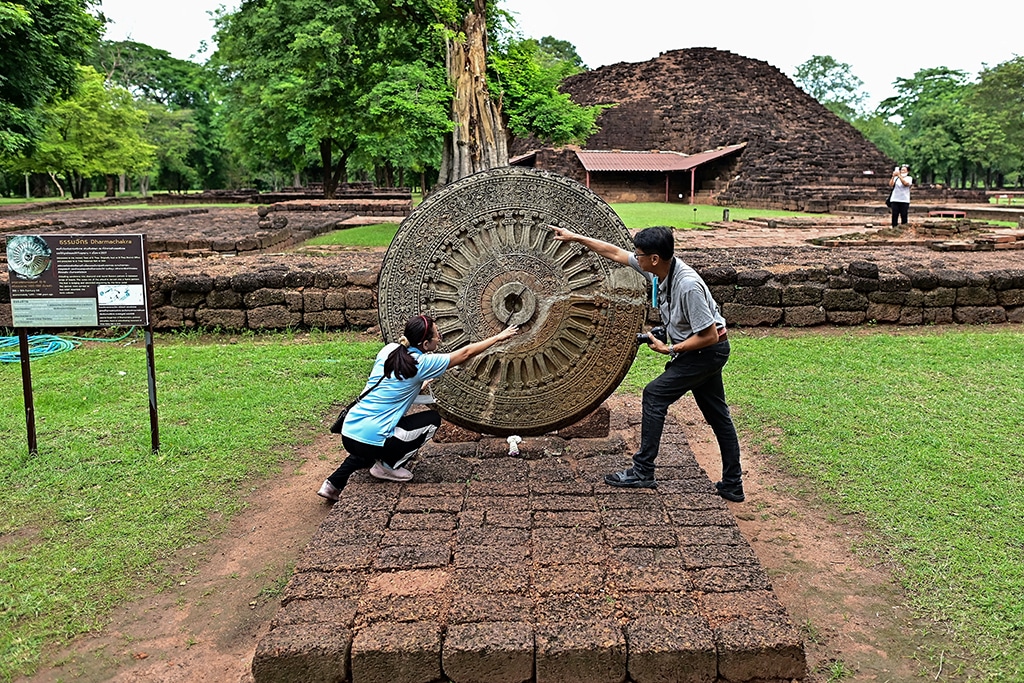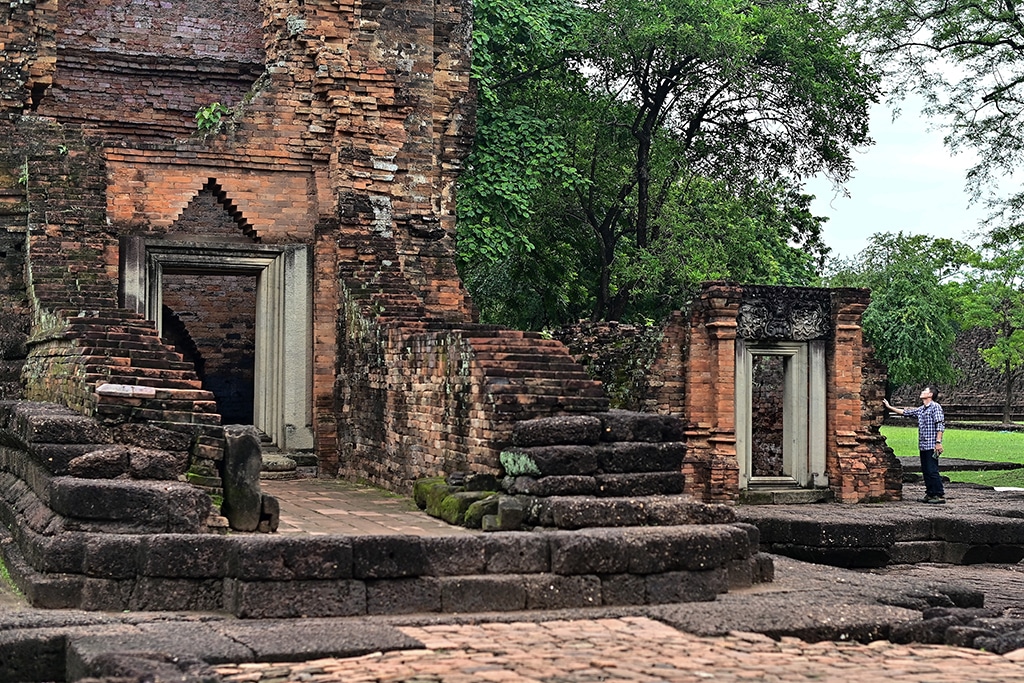Under the scorching sun, Thai archaeologist Tanachaya Tiandee clambers through ruined pagodas in the ancient town of Si Thep, trying to unlock their mysteries—a task made harder because many of the clues are missing. Looters stripped Thailand’s rich historical sites such as Si Thep over decades, taking many items abroad. The kingdom is now trying to repatriate those stolen cultural treasures. “The big picture like the building was discovered, but the artefacts which tell little details are missing, making a lot of stories untold about Si Thep,” Tanachaya told AFP.
“It’s like a piece of puzzle was missing.” Si Thep, which archaeologists date back to between 1,500 to 1,700 years ago, may be inscribed in UNESCO’s cultural world heritage list this week—Thailand’s first addition since 1992. Over several centuries and under the influence of various cultures, it grew into a vital trading metropolis until its decline began in the late 13th century, according to the Thai government’s submission to UNESCO. As 33-year-old Tanachaya carefully excavates the ancient stone constructions, she faces a difficult task piecing together the stories of Si Thep, which lies around 200 kilometers (120 miles) north of Bangkok.
It is believed that over the years, at least 20 objects have been stolen from the site, with experts identifying 11 in museums in the United States. The real number of looted objects is suspected to be far higher, thanks to a lack of documentation. Now Tanachaya—who decided when she was young that she wanted to become a Thai version of movie character Indiana Jones—and her colleagues face their own quest. Can they bring their culture’s treasures home?



‘Won’t accelerate’
Thailand’s government, led at the time by the military, established the Committee to Monitor Thai Antiquities Abroad in 2017. About 340 objects have been voluntarily repatriated to Thailand since then, according to the latest report by the committee. But the process is slow, partly because government officials are wary of jeopardizing diplomatic relations with important allies like the United States.
Instead, Thai authorities have pursued a “discreet” diplomatic route, explained the director-general of Thailand’s Department of Fine Arts Phnombootra Chandrachoti. “We won’t accelerate anything,” he told AFP. The Norton Simon Museum, located in the US state of California, holds nine Thai artefacts, according to a recent statement from the committee—including one item an independent expert says is from Si Thep park.
The items were among 32 scattered in museums across the United States, the committee said. The Norton Simon is only one of a number of US institutions—including New York’s Metropolitan and San Francisco’s Asian Art Museum—that have been named in the growing scandal around art that investigators claim was illegally removed from its country of origin. The museum told AFP it had not heard from the Thai government, but would cooperate with authorities if contacted, and defended holding the items. The works, which it claimed were legally purchased, “have been carefully preserved and displayed” said Leslie Denk, vice-president of external affairs at the institution.



Dilemma over tourism
Thai historians face another dilemma: Si Thep’s bid to become a UNESCO site could boost the local economy—but it could also put the fragile ancient site under strain. Presently, only one percent of visitors to Phetchabun—the province that is home to Si Thep—are foreigners, according to official 2019 data. The Thai government hopes UNESCO designation will help boost the kingdom’s tourism sector, which accounts for almost 20 percent of the country’s GDP. There are, however, concerns about conservation.
The site is already “almost reaching its fullest capacity” of around 2,000 tourists a day, said Si Thep Historical Park head Sittichai Pooddee. “We will try to balance things. We will try to not over-promote,” he said. Missing items mean gaps in the record, which makes it harder to satisfy the curiosity of tourists visiting the site, said Thai historian Tanongsak Hanwong.
“Artefacts dignify Thailand’s past civilization, and when some of the parts are missing, we get stuck and we can’t tell important pieces of the story to the world,” Tanongsak said. At Si Thep’s peaceful complex, domestic visitors gaze at a carefully carved pagoda wall. “It’s the heritage that belongs to Thai people, and that we are proud of. It would be a pity not to get it back,” said Chaowarat Munprom, a 66-year-old retiree. “It once belonged here.”—AFP
.jpg)



